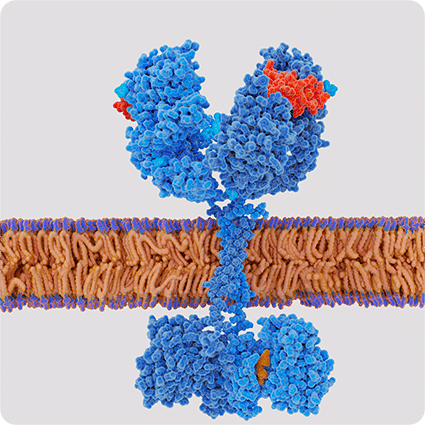The ATP binding site of kinases represents both a golden opportunity and a formidable challenge for drug discovery teams. This well-defined pocket serves as the docking site for potent small-molecule inhibitors, making it an attractive target for drug development. Over the years, researchers have developed a variety of tractable chemical templates, offering a solid starting point for lead optimization. For preliminary kinase discovery, a simple enzyme-based biochemical screen of these compounds typically identifies potent hits. However, the journey from initial hit to a viable therapeutic candidate is far from straightforward.
Which Cell-Based Assay is Right for You?
The Complex Path from Biochemical Assay to Cellular Efficacy
A critical early-stage challenge in kinase inhibitor development is identifying compounds that not only inhibit the enzyme in a biochemical assay but also demonstrate functional inhibition within a cellular context. Unfortunately, many compounds that show promise in biochemical assays fail to replicate this success in cell-based assays, a disappointing and costly reality of drug discovery. For instance, in the figure below, examining the IC50 values of inhibitors targeting PLK1 (polo-like kinase 1) in both cellular and biochemical assays reveals a stark contrast.

Compounds with impressive biochemical potency (IC50 values as low as 10⁻⁹) can sometimes be inactive in cells or exhibit a wide range of potencies compared to their biochemical values. This discrepancy underscores the complexity of translating biochemical activity into cellular efficacy.
NanoBRET™ Intracellular CDK Panel Screen
Test your compound’s CDK binding affinity and selectivity in physiological environment of intact cells
The Hidden Potential of Overlooked Compounds
Even more costly than the failure of compounds in cellular assays is the potential loss of compounds discarded after failing biochemical assays, which might have performed well in a cellular context. There are numerous examples of such cases, where compounds exhibit higher cellular potency than what was observed in biochemical assays. This phenomenon has been notably observed in high-throughput screenings for IGF-1R inhibitors, where the cellular form of the enzyme was preferentially bound, resulting in significantly higher potency in cell-based assays.
The reason behind these discrepancies lies in the inability of biochemical assays to fully capture the true-to-life form of cellular enzymes. For instance, closely related tyrosine kinase receptors often exist as dimers, and without the full range of receptor heterodimers present in a cellular environment, optimal activation and kinetics may not be observed in vitro. Additionally, the dynamics of receptor responses in a cellular environment are influenced by competing phosphatases that modulate the activation profile, factors that are not accounted for in biochemical assays.
Precise Phosphorylation Analysis with Reaction Biology
Learn how our cellular phosphorylation assay can benefit your lead optimization
Leveraging Cell-Based Assays for Kinase Inhibitor Development
To address these challenges, a variety of cell-based assays are available for testing inhibitors in intact cells, offering a more holistic view of a compound’s potential:
- NanoBRET Intracellular Target Engagement Assay: This assay evaluates the binding of the compound to its target within the cellular environment, providing insights into the compound’s efficacy in a more physiologically relevant setting.
- Cellular Phosphorylation Assay: This assay tests changes in the phosphorylation status of the kinase substrate, helping to determine whether the compound effectively inhibits kinase activity within the cell.
- BaF3 Cell Proliferation Assay: This assay investigates how kinase inhibition impacts cellular signaling pathways, providing a broader understanding of the compound’s effects on cell proliferation and survival.
BaF3 Cell Proliferation Assay
Investigate your Kinase Inhibitor activity in a controlled settings
Conclusion
In the journey of kinase drug discovery, the kinase ATP binding site offers both promise and pitfalls. While biochemical assays are a valuable tool for initial screening, they should not be relied upon exclusively. Incorporating cell-based assays early in the drug discovery process is crucial for identifying compounds that will succeed not just in the test tube, but in the complex environment of a living cell. By leveraging these advanced screening tools, researchers can better navigate the challenges of kinase inhibitor development, ultimately leading to more effective and targeted therapies.




